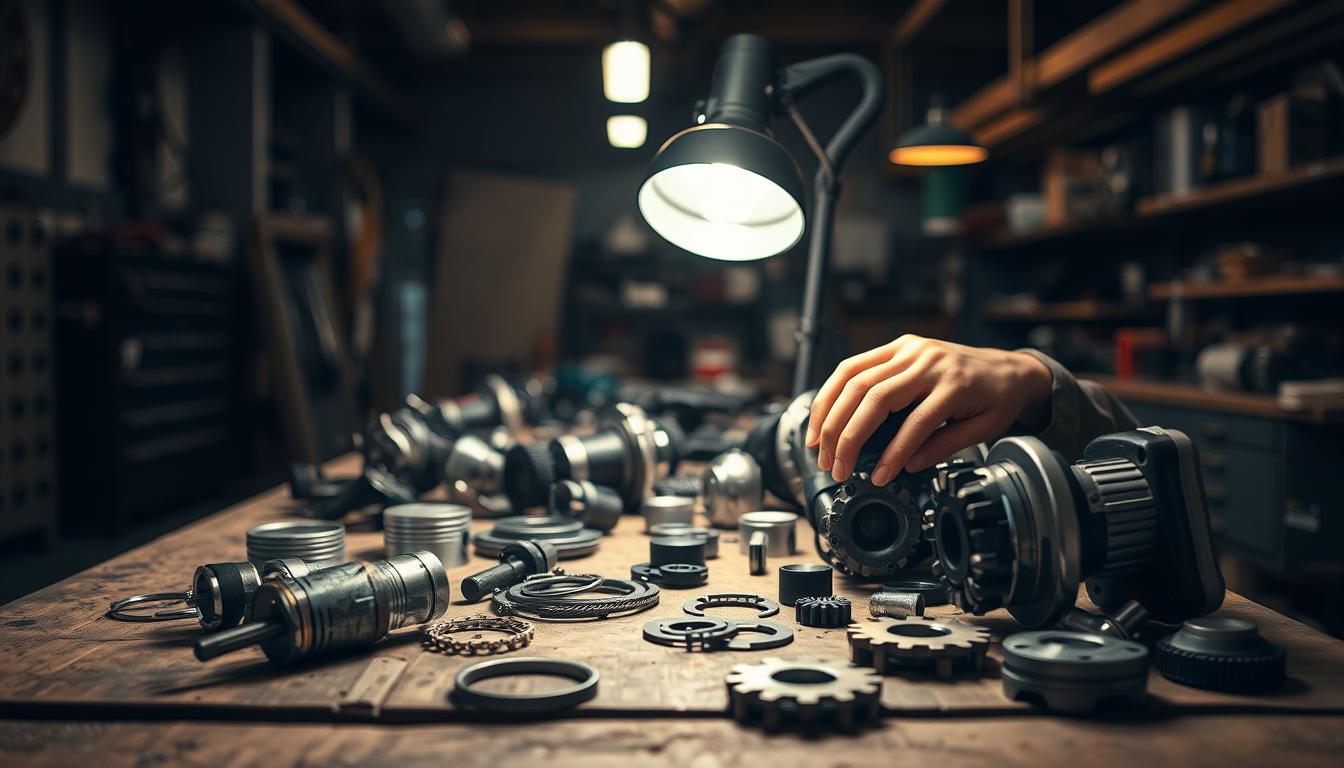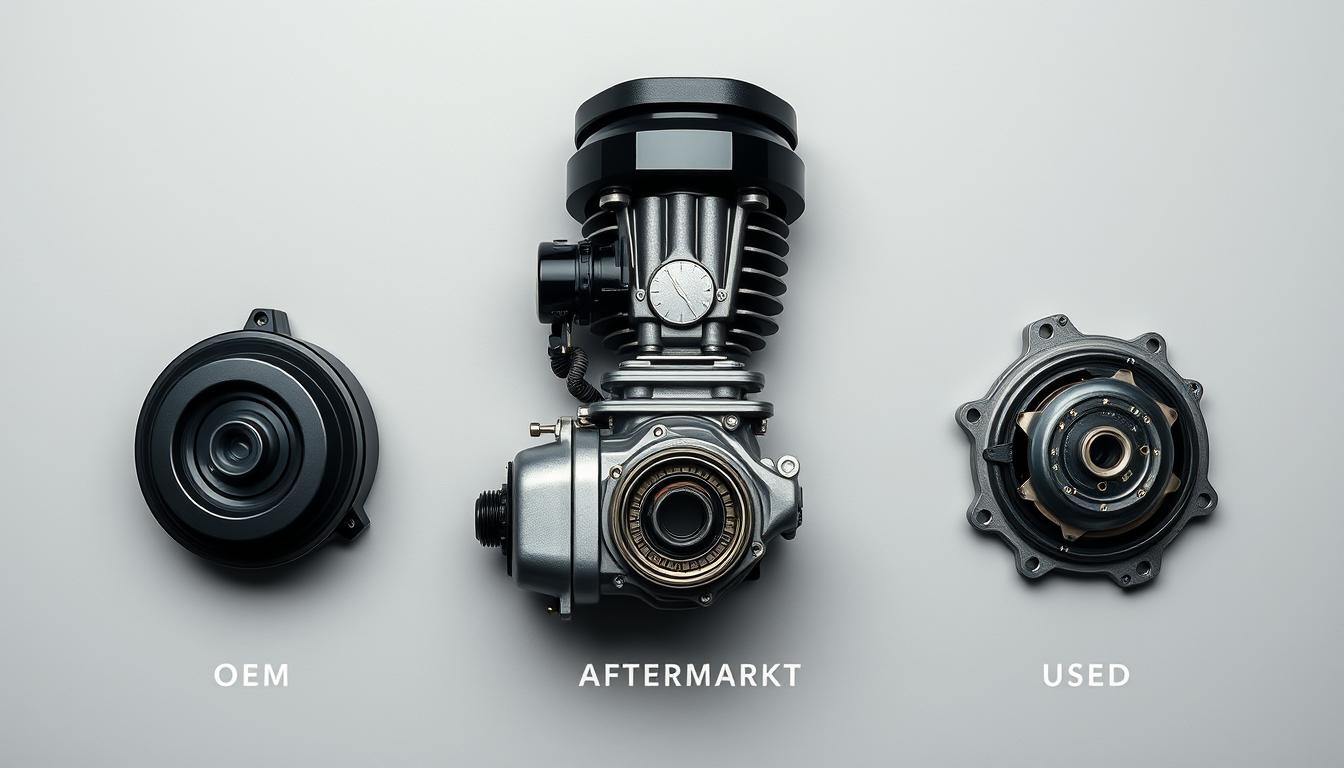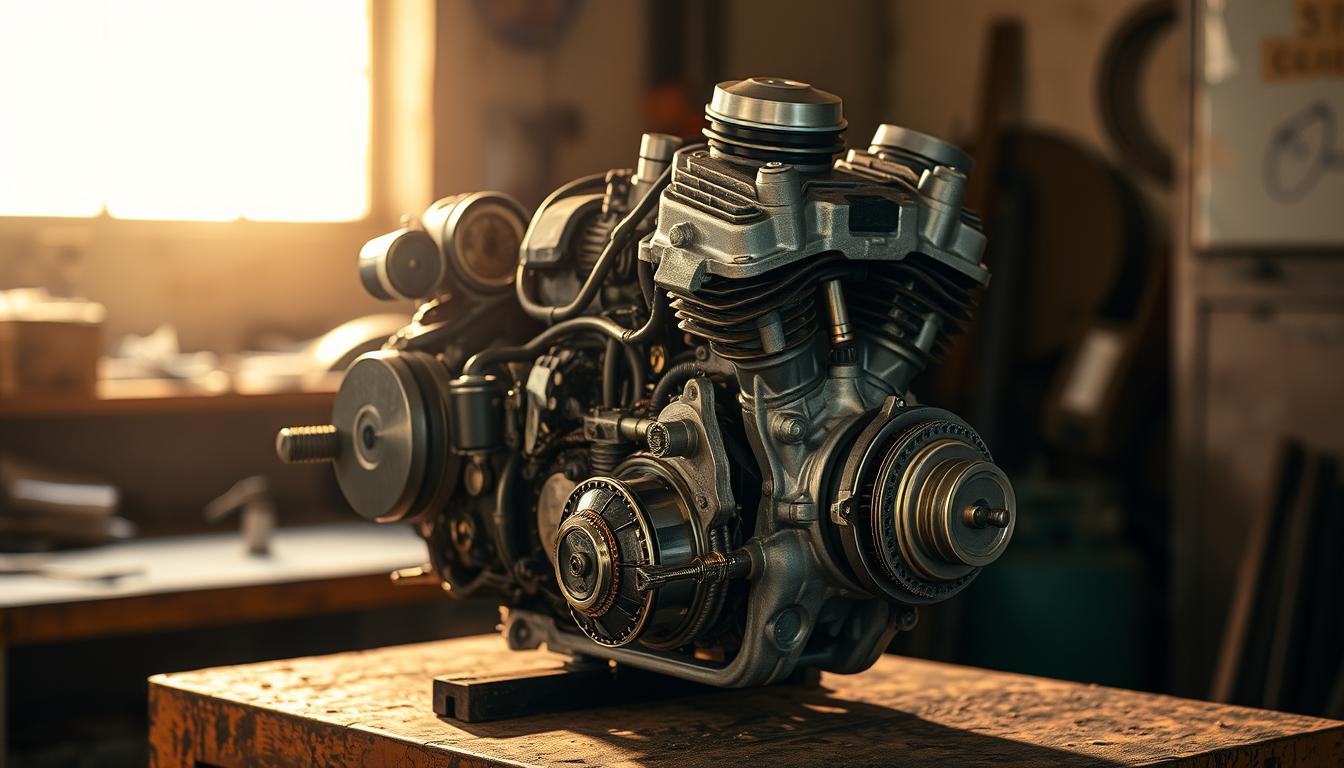Have you ever wondered how to ensure you’re getting the best deal when buying components for your bike? With so many options available, it’s easy to overlook critical details that could save you time, money, and headaches down the road. This guide will walk you through the essential steps to make a smart purchase.
Buying second-hand components can be a cost-effective choice, but it comes with risks. Without a proper check, you might end up with faulty items that lead to expensive repairs or even safety hazards. Taking the time to evaluate each part carefully ensures you get quality components that perform well.
This guide covers everything from assessing the overall condition to testing functionality. By following a structured approach, you’ll gain confidence in your decisions and avoid unpleasant surprises. Whether you’re a seasoned rider or new to the world of bikes, these tips will help you make informed choices.
Key Takeaways
- Thoroughly checking components before purchase saves money and ensures safety.
- A systematic approach helps identify potential issues early.
- Evaluating the condition of each part reduces the risk of future repairs.
- Buying wisely enhances the longevity and performance of your bike.
- Understanding what to look for gives you confidence in your purchase.
Understanding the Importance of Thorough Motorcycle Inspections
Why is it crucial to examine every detail before committing to a purchase? A detailed check ensures you’re making a safe and cost-effective choice. Without it, you risk buying components that could lead to expensive repairs or even safety hazards.
One of the first steps is reviewing the history and documentation. This helps you understand if the item has been involved in accidents or major repairs. For example, mismatched VINs can indicate a history of theft or damage, which might not be disclosed by the seller.
Another critical aspect is checking for rust and overall condition. Rust can weaken the structure of a component, while wear and tear might indicate poor maintenance. These issues aren’t always visible at first glance, so take your time to evaluate every part carefully.
Quality checks are equally important. Faulty components can compromise your safety on the road. For instance, neglected brake systems or worn-out tires increase the risk of accidents. By ensuring each part meets safety standards, you protect yourself and others.
Finally, proper documentation is key. A clean vehicle history can save you up to 20% on repair costs. It also gives you peace of mind, knowing you’ve made an informed decision. Always ask for maintenance records and verify the information provided.
Taking the time to inspect every detail might seem tedious, but it’s worth the effort. It not only saves you money but also ensures your ride is safe and reliable. Remember, a thorough check today can prevent costly problems tomorrow.
Pre-Inspection Preparation: What to Check Before You Buy
Before making a purchase, it’s essential to prepare for a thorough pre-inspection. This step ensures you identify potential issues early and make an informed decision. Start by visually examining the bike’s overall appearance for any signs of damage or wear.
Checking Overall Appearance for Dents, Scratches, and Rust
Begin with a detailed visual check. Look for dents or scratches that might indicate past accidents or rough handling. These imperfections can affect both the bike’s aesthetics and performance.
Pay close attention to areas prone to rust, such as the frame, exhaust, and undercarriage. Rust can weaken the structure and lead to costly repairs down the line. If you spot any, investigate further to determine the extent of the damage.

Verifying VIN and Vehicle History Documentation
Next, verify the bike’s VIN (Vehicle Identification Number) against its documentation. A mismatch could indicate theft or undisclosed damage. Always cross-check the VIN with the bike’s history report to confirm its authenticity.
Review the document for any records of accidents or major repairs. This information helps you understand the bike’s past and assess its current condition. A clean history report adds value and peace of mind.
Taking the time to check these details ensures you’re making a safe and informed purchase. A thorough pre-inspection today can save you from unexpected costs tomorrow.
Inspecting Used Motorcycle Parts: What You Need to Know
When purchasing second-hand components, knowing how to assess their quality and compatibility is essential. A thorough evaluation ensures you’re getting value for your money while avoiding potential safety risks. Start by examining the physical condition of each item to identify any signs of wear or damage.
Evaluating Physical Condition and Compatibility
Begin by checking for visible issues like cracks, rust, or dents. These can indicate poor maintenance or past accidents. Ensure the model of the component matches your bike’s specifications. Compatibility is crucial for optimal performance and safety.
For example, mismatched parts can lead to mechanical failures or even accidents. Always verify that the item fits seamlessly with your bike’s design. This step prevents costly repairs and ensures a smooth ride.
Using a Detailed Checklist for Your Inspection
A checklist is your best tool for a methodical inspection. It ensures no step is overlooked, from assessing the condition to verifying compatibility. Include items like checking for leaks, testing functionality, and reviewing maintenance records.
Here’s a quick guide to creating your checklist:
- Inspect for physical damage like cracks or rust.
- Verify compatibility with your bike’s model.
- Test the functionality of moving parts.
- Review maintenance history for signs of neglect.
Following a structured approach ensures you’re buying used components wisely. It not only saves money but also enhances the longevity and performance of your bike.
Engine, Transmission, and Brake System Evaluation
Evaluating the engine, transmission, and brake systems is a critical step in ensuring your bike’s safety and performance. These components are the backbone of your ride, and any issues here can lead to costly repairs or even accidents. A thorough check helps you identify potential problems early, saving you time and money.
Inspection of Engine and Exhaust for Leaks and Noise
Start by examining the engine for any signs of leaks. Look for oil or coolant stains around the engine block and exhaust system. Leaks can indicate worn gaskets or seals, which may lead to bigger problems if ignored.
Next, listen for unusual sounds when the engine is running. A smooth, consistent hum is ideal. Knocking, ticking, or rattling noises could signal internal issues that need attention. Cold starts should be quick and smooth, with the engine turning over within 1-2 seconds.

Check the oil level and quality. Dark or contaminated oil suggests poor maintenance, while low levels can cause engine damage. A well-maintained engine is key to your bike’s longevity and reliability.
Assessing Clutch, Transmission, and Brake Performance
Test the clutch for smooth operation. It should engage and disengage without hesitation or slipping. A worn clutch can lead to poor performance and increased wear on other components.
Shift through the gears to evaluate the transmission. Each shift should be crisp and precise. Difficulty in shifting or unusual noises could indicate internal damage or misalignment.
Finally, assess the brake system. Check the pads for thickness and the rotors for wear. Brakes should respond quickly and without noise or vibration. Any delay or unusual sound could signal a problem that needs immediate attention.
Here’s a quick checklist for your evaluation:
- Look for leaks around the engine and exhaust.
- Listen for unusual engine noises during startup and operation.
- Check oil levels and quality for signs of neglect.
- Test the clutch and transmission for smooth functionality.
- Inspect brake pads and rotors for wear and performance.
Taking the time to evaluate these systems ensures your bike is safe, reliable, and ready for the road. A detailed check today can prevent costly repairs tomorrow.
Test Rides and On-Road Assessments
Taking a test ride is the best way to gauge how a bike performs in real-world conditions. It allows you to experience its handling, responsiveness, and overall comfort. This step is crucial to confirm your earlier inspection findings and ensure there are no hidden issues.

Spotting Unusual Noises and Performance Issues
During the ride, listen carefully for any unusual sounds. Knocking, rattling, or grinding noises could indicate mechanical problems. These issues might not be noticeable during a static inspection but can become apparent when the bike is in motion.
Pay attention to how the bike accelerates and brakes. Hesitation or delayed responses could signal underlying problems. A smooth and consistent performance is what you should aim for.
Evaluating Handling, Suspension, and Ride Comfort
Assess the bike’s handling by taking it through different road conditions. Sharp turns, bumps, and uneven surfaces can reveal how well the suspension performs. Signs of wear in the suspension system can lead to an uncomfortable and unsafe ride.
Check the tires for uneven wear or damage. Worn tires can affect grip and stability, increasing the risk of accidents. A comfortable ride ensures you can enjoy long journeys without fatigue.
Spending time on a test ride is essential. It helps you identify issues that might not appear during a static inspection. This final step ensures you’re making a confident and informed decision before committing to a purchase.
Identifying Red Flags and Verifying Documentation
Spotting potential issues early can save you from costly repairs and ensure your bike remains reliable. When buying second-hand components, knowing what to look for is crucial. This section will guide you through recognising signs of damage, wear, and incomplete records, helping you make an informed decision.
Recognising Signs of Damage, Wear, and Incomplete Records
Start by examining the component for visible damage. Look for deep dents, scratches, or cracks that could indicate past accidents or poor handling. These signs often suggest underlying issues that may not be immediately apparent.
Excessive wear is another red flag. Compare the component’s condition to its age. If it looks overly worn, it might have been neglected or used extensively. Pay attention to critical areas like joints and moving parts, as cracks here can compromise safety.

Verifying records is equally important. Always ask the seller for maintenance history and service documents. Incomplete or missing records can indicate neglect or hidden problems. A well-documented history adds value and ensures transparency.
Here are some practical tips to help you verify documentation:
- Check for consistent service entries and dates.
- Verify the seller’s claims against the records provided.
- Look for receipts or invoices as proof of maintenance.
If the documentation seems incomplete or suspicious, don’t hesitate to question the seller. Missing documents could be a red flag, signalling potential issues with the component. Staying vigilant during this step safeguards you against hidden problems.
By paying attention to these signs and verifying documentation, you can avoid costly mistakes and ensure your purchase is reliable. Taking the time to evaluate these details is a small effort that pays off in the long run.
Conclusion
Ensuring a safe and reliable ride starts with a careful evaluation of every component. Taking the time to go through each detail can save you from unexpected problems and costly repairs. Always use a checklist to ensure nothing is overlooked, from verifying documents to testing functionality.
When dealing with a seller, ask the right questions and request maintenance records. This step ensures you’re getting a high-quality component that meets safety standards. A methodical approach not only protects your investment but also enhances your confidence in the purchase.
For more insights, check out our guide on common mistakes to avoid when buying used motorcycle. By following these tips, you’ll make informed decisions and enjoy a smoother, safer experience on the road.




